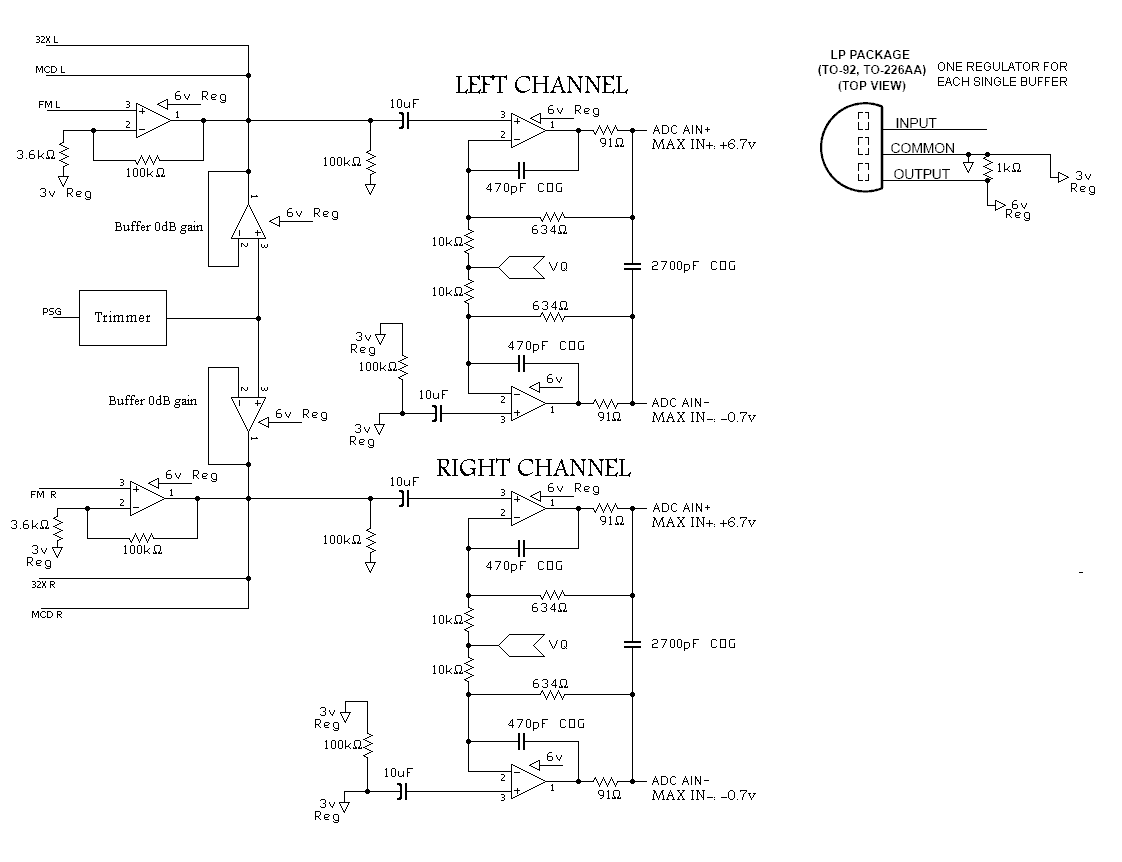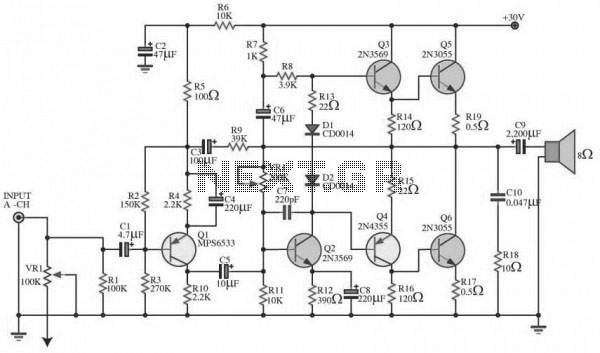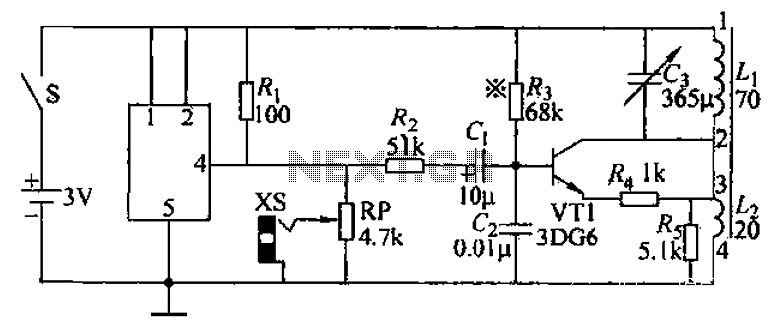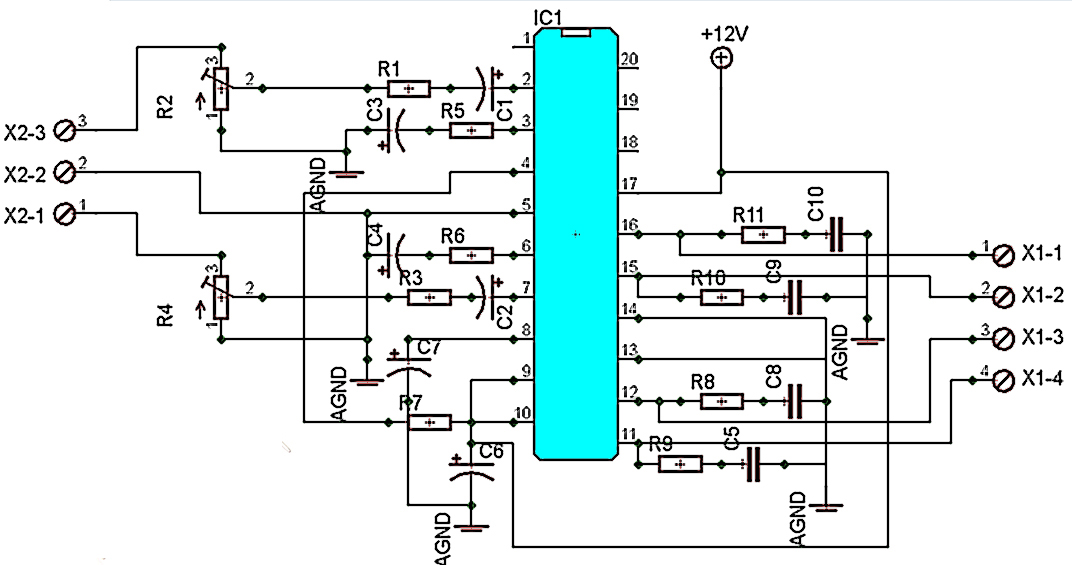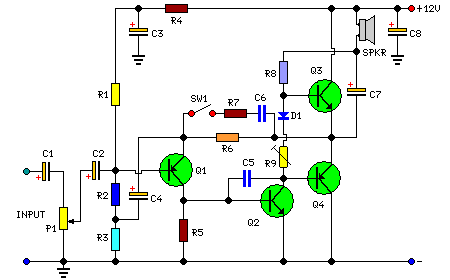
LM 386 Audio Amplifier
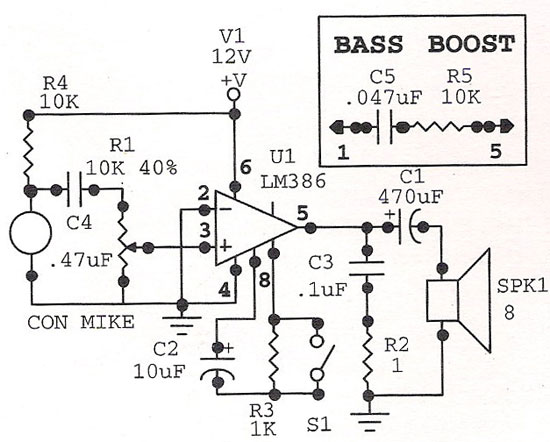
The LM386 Audio Amplifier is one of the earliest audio integrated circuits (ICs) and remains widely used. It operates with a minimal number of external components and is essential for general hobby circuits.
The LM386 is a low-voltage audio power amplifier designed for use in battery-powered devices. It features a low quiescent current, making it suitable for portable applications. The amplifier can deliver up to 1 watt of output power into an 8-ohm load with a power supply voltage ranging from 4 to 12 volts, which allows for flexibility in various circuit designs.
The internal gain of the LM386 is set to 20, but it can be increased to 200 by connecting a resistor and capacitor between pins 1 and 8. This feature provides versatility in applications requiring different amplification levels. The device includes a built-in thermal shutdown and short-circuit protection, enhancing its reliability in various operating conditions.
Typical applications of the LM386 include audio amplification in radios, televisions, and portable speakers, as well as in DIY electronics projects. The circuit design for using the LM386 typically involves connecting the input audio signal to pin 2, while pin 3 is grounded. An external capacitor can be added at the output (pin 5) to filter high-frequency noise, ensuring a cleaner audio output.
For optimal performance, it is recommended to use decoupling capacitors close to the power supply pins (pin 6 and pin 4) to minimize power supply noise. The output can be connected to a small speaker or further amplification stages, depending on the specific application requirements.
Overall, the LM386 remains a popular choice for audio amplification due to its simplicity, efficiency, and effectiveness in delivering quality sound in compact circuit designs.LM 386 Audio Amplifier LM386 is one of the earliest audio ICs but is still going strong. It works with a few external components and is indispensable for general hobby circui.. 🔗 External reference
The LM386 is a low-voltage audio power amplifier designed for use in battery-powered devices. It features a low quiescent current, making it suitable for portable applications. The amplifier can deliver up to 1 watt of output power into an 8-ohm load with a power supply voltage ranging from 4 to 12 volts, which allows for flexibility in various circuit designs.
The internal gain of the LM386 is set to 20, but it can be increased to 200 by connecting a resistor and capacitor between pins 1 and 8. This feature provides versatility in applications requiring different amplification levels. The device includes a built-in thermal shutdown and short-circuit protection, enhancing its reliability in various operating conditions.
Typical applications of the LM386 include audio amplification in radios, televisions, and portable speakers, as well as in DIY electronics projects. The circuit design for using the LM386 typically involves connecting the input audio signal to pin 2, while pin 3 is grounded. An external capacitor can be added at the output (pin 5) to filter high-frequency noise, ensuring a cleaner audio output.
For optimal performance, it is recommended to use decoupling capacitors close to the power supply pins (pin 6 and pin 4) to minimize power supply noise. The output can be connected to a small speaker or further amplification stages, depending on the specific application requirements.
Overall, the LM386 remains a popular choice for audio amplification due to its simplicity, efficiency, and effectiveness in delivering quality sound in compact circuit designs.LM 386 Audio Amplifier LM386 is one of the earliest audio ICs but is still going strong. It works with a few external components and is indispensable for general hobby circui.. 🔗 External reference
